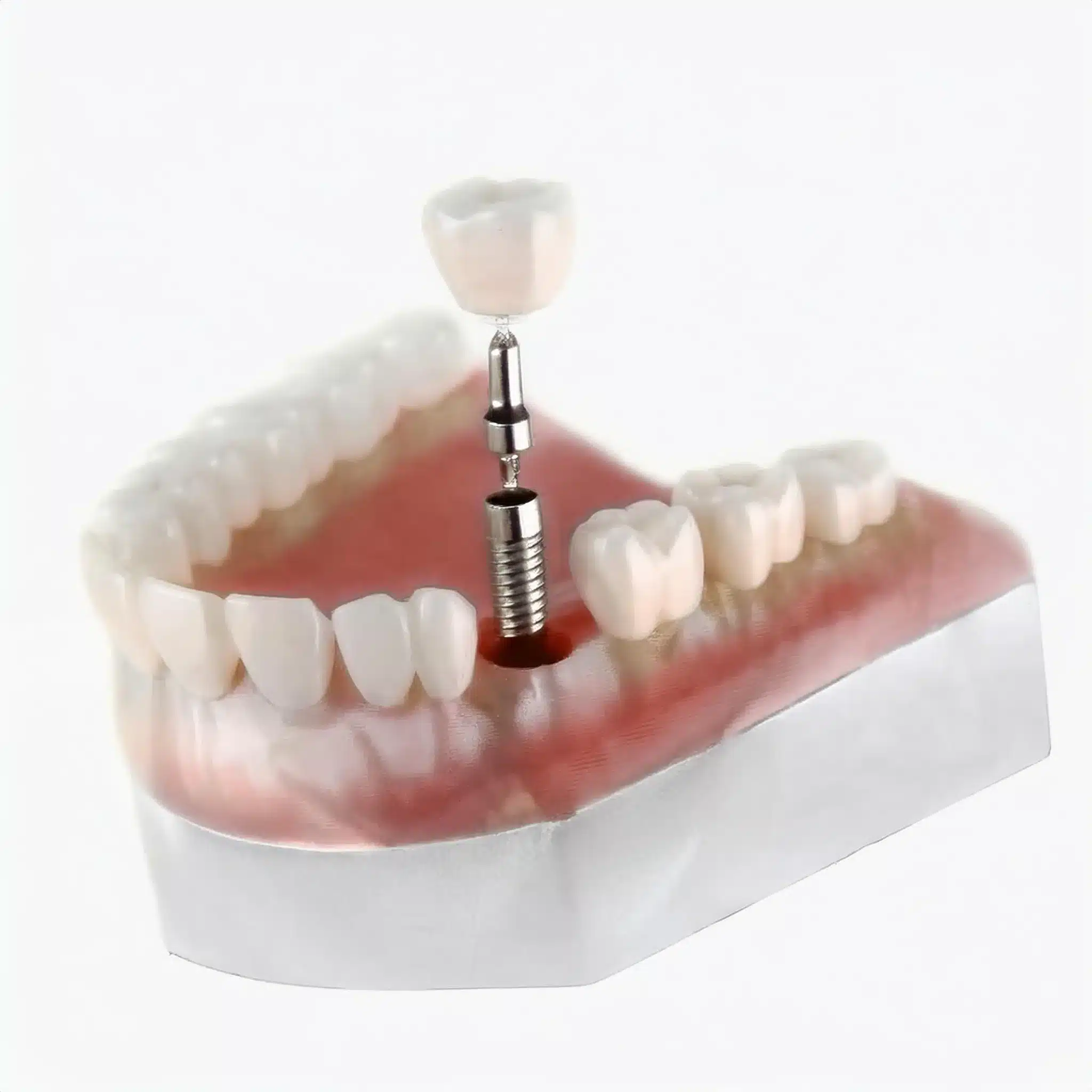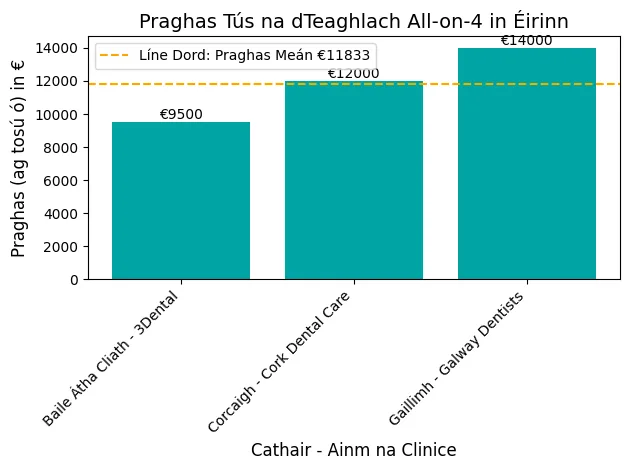Transosteal dental implants are the answer for those with limited jawbone height, worried about implant stability and long term success.
If you’ve been looking for a reliable solution, here’s what you need to know.
What are Transosteal Dental Implants?
Transosteal dental implants are ideal for patients with severe jawbone loss, offering a stable solution where traditional implants fail. The procedure involves securing a metal plate beneath the jawbone with screws to support a dental prosthesis, achieving up to 95% success when combined with bone augmentation.

How Do Transosteal Dental Implants Work?
Transosteal dental implants are for patients with minimal jawbone height where traditional implants can’t be used.
This section will explain the structure of these implants and the surgery involved.
Structure and Components of Transosteal Implants
Transosteal implants have a metal plate fixed beneath the jawbone.
From this plate, screws or bolts go through the jawbone to anchor the dental prosthesis.
The metal plate provides a stable base, especially for patients with minimal bone height.
Unlike endosteal implants that are embedded in the bone, transosteal implants go through the bone and provide a robust anchor for the prosthesis.
These are ideal for cases where bone augmentation may not be enough or possible.
The structure’s stability makes it suitable for patients with poor bone quality and the overall success of the dental implant procedure (1).

Surgery for Transosteal Implants
The surgery for transosteal implants is more invasive and complex compared to mini dental implants.
It starts with an incision along the jaw to expose the bone, where a metal plate is bolted directly to the bone.
This plate is usually made of biocompatible titanium and goes beneath the bone and is secured with screws that penetrate the jawbone to provide a stable base for the prosthesis.
Since this is an invasive procedure, bone augmentation techniques are often needed to provide support.
Studies show that the success rate can be up to 95% when combined with bone augmentation (2).
Patients who undergo this surgery require a longer recovery period, but the results are more durable and stable than other types of implants.

When to Use Transosteal Implants?
Transosteal dental implants are a special solution for specific dental conditions.
This section will discuss the clinical situations where these implants are best suited and the pros and cons.
Clinical Situations for Transosteal Implants
Transosteal implants are recommended for patients who have extreme resorption of the jawbone or when the bone height is not enough to support other types of implants.
These conditions often occur in patients who have been edentulous (without teeth) for a long time and have significant bone loss.(3)
In these cases, traditional endosteal implants can’t be used because there’s not enough bone to anchor the implant.
For patients with severe bone loss, especially in the lower jaw, transosteal implants are a reliable option because they don’t rely on the bone’s height for stability.

Transosteal Implants vs Other Implant Types
Comparing transosteal implants with other implant types is important to understand its advantages and disadvantages.
This section will compare with endosteal and eposteal implants.
Endosteal Implants vs Transosteal Implants
Key Differences:
Bone Requirements:
Endosteal implants require sufficient bone height and density; transosteal implants are designed for cases with significant bone loss.Invasiveness:
The surgery for transosteal implants is more invasive because of the need to bolt the metal plate through the jawbone; endosteal implants are less invasive and only require drilling into the bone.Application:
Endosteal implants are used in most standard cases; transosteal implants are used in severe cases of bone resorption.
Eposteal (Subperiosteal) Implants vs Transosteal Implants
Key Differences:
Positioning:
Eposteal implants sit on top of the jawbone; transosteal implants penetrate through the bone, providing more stability.Invasiveness:
Eposteal implants are a less invasive, simpler surgery; transosteal implants are more invasive.

Conclusion & Key Takeaways
Key Takeaways:
Transosteal dental implants are ideal for patients with significant bone loss or low jawbone height when traditional implants aren’t an option.(4)
The procedure involves placing a metal plate beneath the jawbone, making it more invasive, with higher costs and longer recovery times.
Success rates improve with prior bone augmentation, though risks like infection, nerve damage, and peri-implantitis exist.
Proper planning and care can minimize these risks.
Costs vary based on procedure complexity, bone augmentation needs, and implant materials, with financing and partial insurance coverage potentially available.
Conclusion:
A transosteal implant is a strong and reliable option for patients with severe jawbone deficiencies, a solution where other implants will not work.(3)
By knowing the procedure, risks, and cost, patients can make an informed decision and achieve a successful outcome with transosteal implants.

FAQ
References
Duyck J, Naert I. Influence of Prosthesis Material on Screw Loosening of Implants. Clin Oral Implants Res. 1997;8(6):492-497.
Article: Influence of Prosthesis Material on Screw Loosening of Implants
Adell R, Lekholm U, Rockler B, Brånemark PI. A 15-Year Study of Osseointegrated Implants in the Treatment of the Edentulous Jaw. Int J Oral Surg. 1981;10(6):387-416.
Article: A 15-Year Study of Osseointegrated Implants in the Treatment of the Edentulous Jaw
McDermott NE, Chuang SK, Woo VV, Dodson TB. Complications of Dental Implants: Identification, Frequency, and Associated Risk Factors. Int J Oral Maxillofac Implants. 2003;18(6):848-855.
Article: Complications of Dental Implants: Identification, Frequency, and Associated Risk Factors
Esposito M, Grusovin MG, Coulthard P, Worthington HV. The Efficacy of Various Bone Augmentation Procedures for Dental Implants: A Cochrane Systematic Review of Randomized Controlled Clinical Trials. Int J Oral Maxillofac Implants. 2006;21(5):696-710.
Article: The Efficacy of Various Bone Augmentation Procedures for Dental Implants: A Cochrane Systematic Review of Randomized Controlled Clinical Trials




